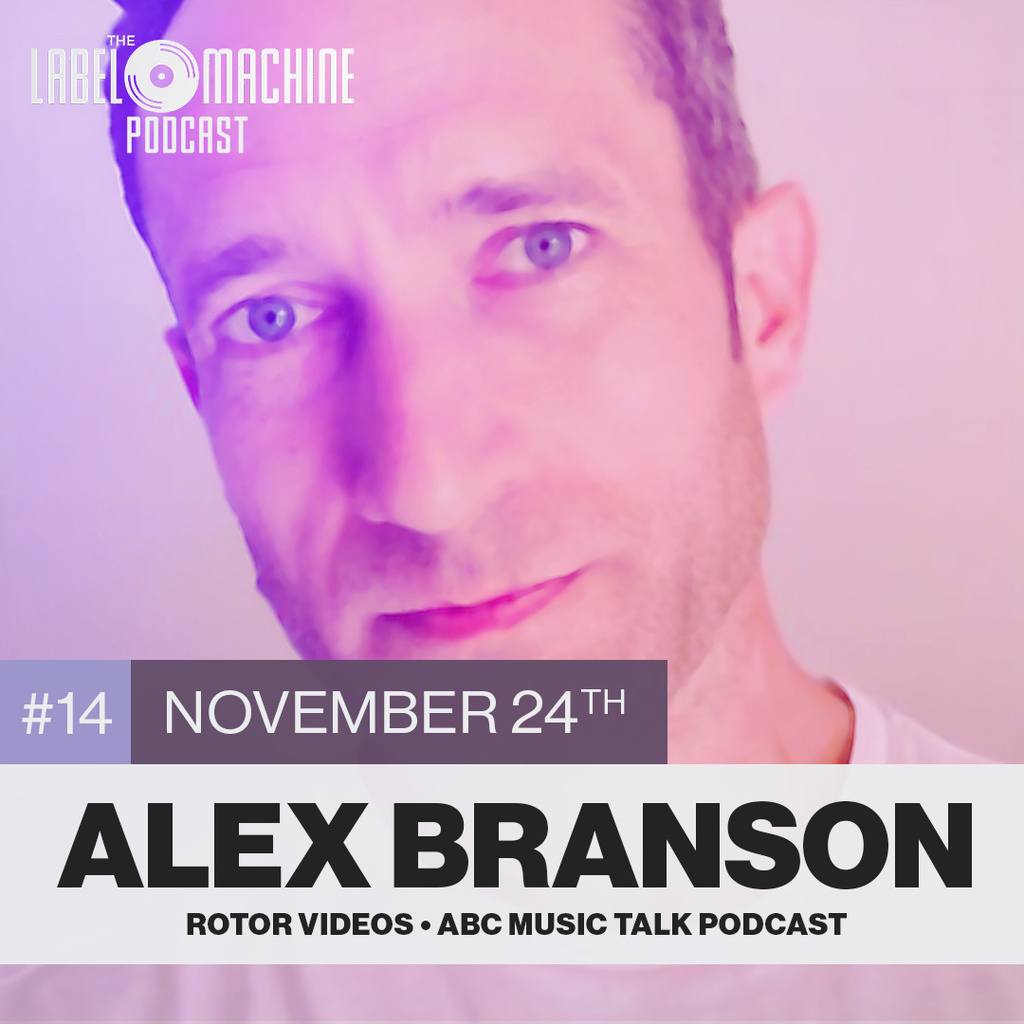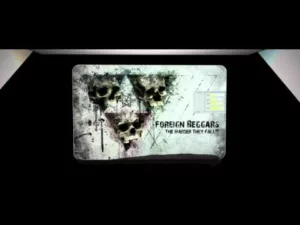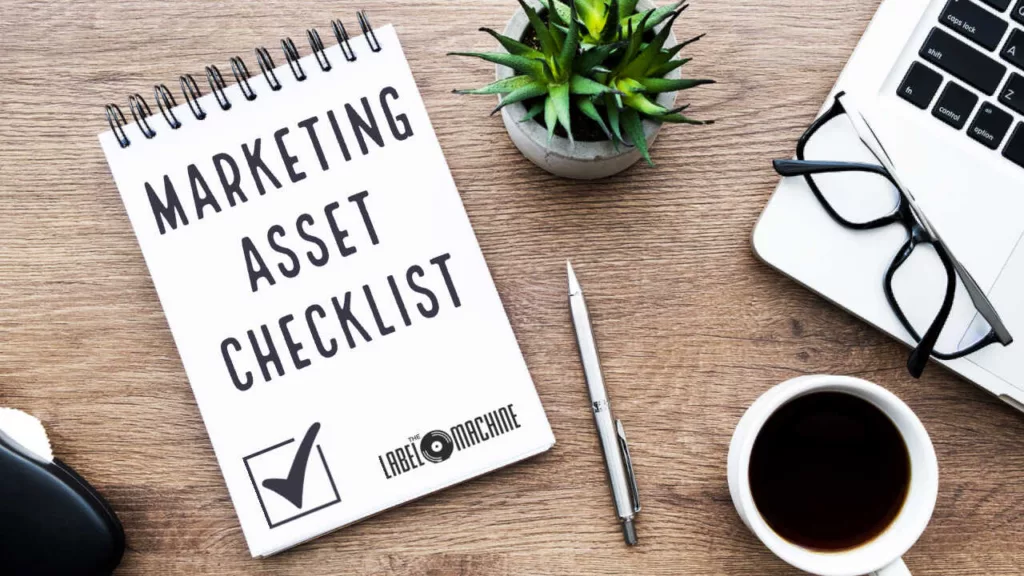In the world of music marketing, the release of an album or EP can be an exciting but nerve-wracking time. A solid marketing schedule can help build hype and drive engagement with fans leading up to and following the release.
But to create an effective schedule, you need to have the right marketing assets at your disposal. In this blog, we will discuss the marketing assets you need to build and curate in order to get the most out of your marketing schedule.
From teaser trailers and DJ mixes to social media banners and playlists, we’ll cover all the essential assets you’ll need to build a successful campaign.
Combining Assets into your Marketing Schedule
When you write your marketing schedule, it must include the marketing assets that you have available or intend to create that will largely shape your schedule.
To quickly summarise, a marketing schedule is essentially a timeline of when you release your marketing assets, to build up awareness of the track or EP towards the release day, and follow up promotion in the first month the music is released.
So for your marketing schedule to work, you need to build the basic marketing assets. As they say, “content is king” and you want as many digital assets as possible to use building up to the music release and also following it to keep the momentum up. The more people who hear about/see your release, the more traction it gets.
There is a famous theory that someone needs 7 touch points to make a buying decision, that is, someone has to interact or see your name/logo/brand 7 times for it to become familiar enough and for them to be comfortable to trust it – in our case to get to the point where they buy or listen to the music.
You use assets to create these touch points. Some assets are valuable enough that you can use them to secure exclusive exposure, for example, a premiere of a track on a blog. So creating assets are vitally important to getting as much exposure for your release and I’ll describe the essential ones you need.
Music Marketing Assets Overview
Here is a list of example assets you will need for a music release:
- The artwork of the release
- The artwork that is edited for the varying social media banner formats
- Video previews of your music uploaded into the native format for Facebook, Twitter, Instagram
- Teaser trailer of the music, which can be animating the artwork for example
- A DJ mix uploaded to SoundCloud, Facebook Live and YouTube which features the new release
- Videos of the artist performing the track
- Live videos in the studio showing how the artist made the track
- Pictures of the artist
- Performance pictures of the artist and behind-the-scenes Studio pictures
- Pictures of the artist with other DJs
- Video clips of other artists that inspire the artist
- Production tips that the artist recommends
- Spotify playlists curated by the artist
- ‘Ask me anything’ takeovers on an artist Facebook or Instagram feed.
You will use these assets as the building blocks to tell a story about the label, the artist and the music.
Music
Mastered WAV and 320kbps MP3 version with artwork embedded. If you need to add artwork to an MP3 and are unsure you can use iTunes for this.
Create a private Soundcloud link of the release once it’s done as you’ll use this to send to other people.
Teaser edits of the music
Create 40 second edits of the tracks that have the intro with a small bit of the drop or main chorus. Upload these to Soundcloud and use them 3-4 weeks before the release to tease the music for the core fans.
YouTube
Upload the music to YouTube using Youtube Art Tracks. These can be created in the creation channel that is available inside your YouTube account.
Release artwork
Save the final version as 3000×3000 pixels in 72 DPI into the releases folder. Save a 1000×1000 and 500×500 version as these are useful for embedding in the press release and sharing online.
Release Date / Out Now Banners for each social media platform
These are the variations of the artwork used online. Typically arranged so that the text, as in the artist name, label logo, and the ‘RELEASE DATE’ overlays the artwork.

Then create a second batch with all the same info and replace the date with ‘OUT NOW’. This version will be used on the release day.
If you are doing a pre-order campaign then create ‘PRE-ORDER’ banners too.
Make them up for each of the social media channels required banner sizes for Facebook, Twitter, Instagram, Instagram Stories, and YouTube. Sign up to Canva for a free account as they have the most up-to-date correct size presets built into the system, which you can use and download.
Teaser trailer
This is a short video of the music, artwork, release and track titles edited together into an animation to create a teaser trailer. It’s used to hype the release and is usually the first public asset showcasing the upcoming release.
It will usually end with the full artwork and the release date being displayed. If the release is more than one tune then get the producer to edit the tunes together with a small section of each tune into a tiny mix that the video animator can create the teaser trailer for too.
If you have an album, you can break up the album into smaller part teasers to use across the campaign. These have become very popular in recent years.
You can check out more examples of teaser trailer videos by visiting the Book Resources tab here
Top ten playlists from the artist
Ask the artist to create a top ten list of favourite tunes. They need to be already released, as you will use a public playlist to create them. Use the list to create a Spotify playlist for the artist and for electronic artists use the Beatport Top Ten submission tool to create a Top Ten list there too.
Ensure of course, that the track in the release is included in the top 10 too! Release this on the week of the main release, as the music will need to be out to be submitted.
DJ promo mix for electronic releases
This is a DJ mix set that showcases the type of music the artist would play in a DJ set, or the music that inspires them to make the music they do. When dealing with dance music producers, 99% of them will also DJ or have some sort of live show and this is a great way to show what to expect when you see them live.
Mixes are typically 40min to an hour long. When you have a roster of artists you can have the DJ’s playing each other’s music in their sets, pushing the sound of the label together.
This is a good asset to implement from the first release as you can build up a mix series, which can later become a collector’s item for fans.
Ensure the tracks in the release you are promoting are included in the mix, and this is also a good place to drop in ID’s – unreleased tunes that are often playable demos or unreleased music from the artist. Great way to tease future releases for the artist into the mix.
You’ll want to upload the mix to Soundcloud, and Mixcloud, however be mindful of using tracks releases on major labels, and indie majors. Soundcloud uses audio detection software to find uploads of the labels music including detecting them in DJ mixes. You can have a mix taken down automatically from Soundcloud for this so be careful with these tracks.
Extra artist assets
The following assets are ideal to have for promotion, but you are relying on the artist for these assets so as a record label you can’t always guarantee the artist will deliver these.
-Videos of the artist performing the track
-Live videos in the studio showing how the artist made the track
-Pictures of the artist
-Behind-the-scenes tour pictures
-Production tips that the artist recommends
Bonus assets
These are not essential but if you have the budget and feel like you have a strong enough release these are all great assets to have, the music video being the strongest.
Music Video
Music videos make great assets but they can be expensive to make one that is of good enough quality that it helps promote the music and you will want to upload to YouTube.
I have seen decent videos built around a cheap-to-film concept and using loads of favours, however I have seen cheap videos built around favours fail completely.
If you want something decent with minimal risk then its best to get a decent budget and to pay a professional crew. Here are some great resources for finding music producers:
https://www.radarmusicvideos.com

You might also be interested in…
Merchandise + merchandise gimmicks
Using a merchandise gimmick, by which I mean some piece of merchandise that’s related to the music release, you can really get people talking about an artist – which is the whole point, right?

When we released Skrillex ft. Foreign Beggars – Still Getting It, we decided to release it on a USB credit card. The artwork was on the front of the card and you plugged in the card to a computer and could download full and uncompressed versions of the tracks and remixes.
We built an interactive graphical menu where you could watch music videos and download desktop-sized artwork too. No one had done this before, so it was a real talking point. We packaged it up in a nice metal tin with the label logo engraved on the top. We saw plenty of times that people found alternative storage uses for this neat little tin as well.
Other examples I’ve seen are sunglasses which are popular for summer releases. Creating one-of-a-kind skateboard designs that featured album artwork. And custom artwork on craft beer is becoming popular these days too.
You can of course, release merchandise alongside the release, which can become part of the press, for instance, in the case of vinyl picture disks, making a bit of an event of signing the fresh vinyl, or making a video of playing the first test press.
There are many ways to create assets, and you should now understand what you can use to create your own assets to market and promote your label’s music.
In conclusion
To conclude, the success of a music release largely depends on the number of touchpoints or interactions with potential listeners. These touchpoints are created by marketing assets, which are essential to get maximum exposure for your release.
The marketing assets mentioned in this blog, such as teaser trailers, video previews, pictures, and performance videos, are some of the building blocks you can use to tell a story about the label, artist, and music.
Creating such assets should be an integral part of your marketing schedule, as they help to build anticipation and excitement for the release. By using a combination of assets, you can create a cohesive marketing campaign that will help you achieve your desired outcome.
If you are looking to start a record label and run your own releases on your own label, find out how to do in 7 steps here
